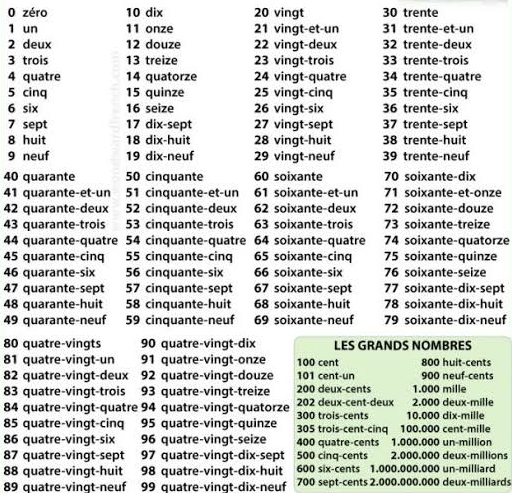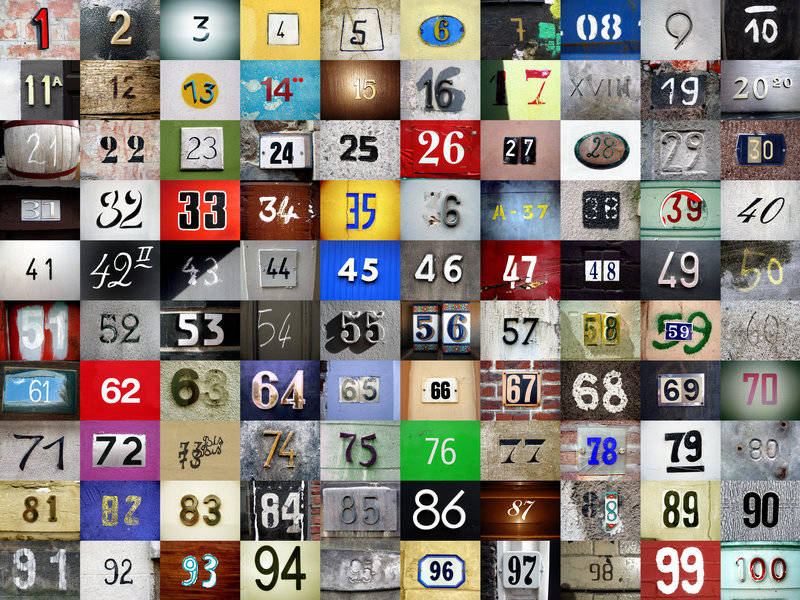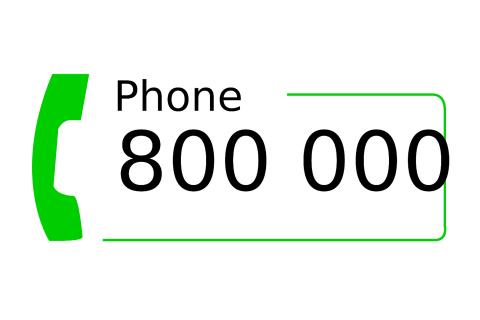The French number system is remarkably complicated, despite the fact that it is far from ubiquitous. While French Pronunciation is usually difficult for English speakers, many numbers also include some implicit arithmetic inside the name, which means that a basic two-digit number might wind up being eighteen letters (and three dashes) long. However, there is some logic to the number system, which becomes simpler to recall once it is written out in English. If you also want to know more about this topic, you’re welcome here. Read on as we explain the ways to read French numbers.

French number system origin
If you’re considering a trip to a French-speaking nation, you’ll need to know your French numbers. Thus, the following circumstances will undoubtedly necessitate your knowledge of the French number system:
- In France, you may be given instructions with a specific number of meters/kilometers or an address with numbers.
- Train station announcements typically contain the (often four-digit) train number, platform, and departure time using the 24-hour clock (“military time”).
- If you are ever asked for personal information, you must be prepared to provide your birth year.
French number system history
The number system is one of the most challenging aspects of the French language for non-native speakers to grasp. It may be smooth sailing until you reach sixty-nine, but then strange things begin to happen since they don’t have a separate term for seventy, eighty, or even ninety. Hence, even the most fluent French speaker may recall that all-too-familiar moment when you pause when writing a phone number or have to scratch out a few digits because what you thought was sixty-something turned out to be 72. It appears that being strong at mental mathematics is required in order to understand these higher numbers in French. Consider the number 77, or sixty-ten-seven’ as it is pronounced in French. And it just gets worse. Thus, the number 89 translates to “four-twenty-ten-nine,” or quatre-vingt-Dix-Neuf.
Numbers in French language

Numbers in French 1 – 10
0 – zéro
1 – un
2 – deux
3 – trois
4 – quatre
5 – cinq
6 – six
7 – sept
8 – huit
9 – neuf
10 – dix
Try memorizing these French numbers by repeating them a few times a day until you’ve mastered them. Thereafter, if you discover your Zen by counting to 10, why not try it in French the next time?
Numbers in French 11 – 20
Let’s move on to the next stage: the adolescent years. The good news is that there is a French counterpart to the English suffix “-teen”: the prefix dis-. However, the main drawback is that, unlike in English, where “-teen” begins with the number 13, in French, it begins with the number 17.
Hence, you’ll encounter the first examples of one of the fundamental principles of writing French numerals in letters in your teens. If a number contains several words, they are separated by hyphens.
11 – onze
12 – douze
13 – treize
14 – quatorze
15 – quinze
16 – seize
17 – dix-sept
18 – dix-huit
19 – dix-neuf
20 – vingt
Numbers in French 21 – 30
Then, after we’ve reached the age of twenty, it’s all downhill from there. Thus, all you need to know is the word for twenty (vet), followed by a lower number.
The only thing to remember is the number 21 (vingt et un), which has the “one” appended like “twenty and one” as opposed to 22 (vingt-Deux), 23 (vingt-trois), and so on.
21 – vingt-et-un
22 – vingt-deux
23 – vingt-trois
24 – vingt-quatre
25 – vingt-cinq
26 – vingt-six
27 – vingt-sept
28- vingt-huit
29 – vingt-neuf
30 – trente
Numbers in French 31 – 70
Once you’ve mastered that rhythm, it’s quite simple to count all the way up to the sixties. Substitute vingt for one of these integers instead.
31 – trente-et-un
32 – trente-deux
40 – quarante
41 – quarante-et-un
42 – quarante-deux
50- cinquante
51 – cinquante-et-un
52- cinquante-deux
60 – soixante
61 – soixante-et-un
62 – soixante-deux
Numbers in French 71 – 80
This is when the arithmetic I mentioned before comes into play. Instead of 70 being some sept, it’s soixante-six in French. Hence, if you’re already getting the hang of the numbers, you’ll see that 70 in French translate to “60 and 10.”
Using that reasoning, the numbers 11-19, not 1-9, should be used at the conclusion of 71-79.
In French, below are the numbers 70-79:
70 – soixante-dix
71 – soixante-et-onze
72 – soixante-douze
73 – soixante-treize
74 – soixante- quatorze
75 – soixante-quinze
76 – soixante-seize
77 – soixante-dix-sept
78 – soixante-dix-huit
79 – soixante-dix-neuf
Isn’t it a little strange? It gets much weirder. When you get to eighty, you have to do some math instead of having a term for it. French people will say quatre-vingts, which translates to “four twenty.” Then, when you come to ninety, you do the same thing we did before with the seventies. You take an eighty and add 10. However, we are now adding it to those “four twenties,” so when you say “ninety,” you are actually saying four-twenty-ten, four-twenty-eleven, four-twenty-twelve, and so on.
Numbers in French 80 – 89
Multiplication is the name of the game here. Instead of 80 being a form of huit or even “soixante-vingt,” it’s quatre-vingts. Yes, “four twenties” – or 420 – is correct. The “s” at the end of “vet” disappears after 80. When you think about it, this makes logic, but I can’t escape the idea that it’s simply another method to complicate things. Also, the “et” is absent in 81, which is unusual (quatre-vingt-un). There is no logic there that I can conceive of. Here are the French digits 80-89:
80 – quatre-vingts
81- quatre-vingt-un
82 – quatre-vingt-deux
83 – quatre-vingt-trois
84 – quatre-vingt-quatre
85 – quatre-vingt-cinq
86 – quatre-vingt-six
87 – quatre-vingt-sept
88 – quatre-vingt-huit
89 – quatre-vingt-neuf
Numbers in French 91 – 100
The digits 90-99 in French will take it up a notch. Instead of coming up with a new moniker for “90,” we’ll take quatre-vingt and multiply it by 10! Then, as with soixante-dix, apply the same method to the ones, retaining them as adolescents. This is how it works:
90 – quatre-vingt-dix
91 – quatre-vingt-onze (note that there is no “et” here.)
92 – quatre-vingt-douze
93 – quatre-vingt-treize
94 – quatre-vingt-quatorze
95 – quatre-vingt-quinze
96 – quatre-vingt-seize
97 – quatre-vingt-dix-sept
98 – quatre-vingt-dix-huit
99 – quatre-vingt-dix-neuf
Numbers in French 100 to 1000
The French numerals get simpler after 99. Cent is the term meaning “hundred.” When counting by hundreds, you just add the number of hundreds before the word, just as in English. However, as we’ve seen with certain French numbers, the form that ends in “0” must be pluralized since it indicates the number of sets of 100. For example, 300 is three pennies. How do you pronounce “700”? That’s right: ninety-seven cents.
When you want to add a one or ten, it’s likewise quite simple. Simply add the number after “cent.” You don’t even need to include “et” with one. Furthermore, you are no longer need to agree on cent with the number of hundreds before it. Following are some examples:
100 – cent
101 – cent-un
102- cent-deux
110 – cent-dix
150 – cent-cinquante
155 – cent-cinquante-cinq
189 – cent-quatre-vingt-neuf
200 – Deux-cents
201 – Deux-cent-un
299 – deux-cent-quatre-vingt-dix-neuf
800 – huit-cents
822 – huit-cent-vingt-deux
999 – neuf-cent-quatre-vingt-dix-neuf
When you get to 1000, things get even easier because the French opted to abandon the practice of pluralizing mille when there are numerous thousands.
As a result, 1000 is mille and 9000 is neuf-mille. How would you write the number “6000”? That’s correct: six mille. The regulation also applies to the 10,000’s and 100,000’s as well. The French word for 10,000 is dix-mille. 100,000 is one hundred thousand.

French number system Wikipedia
In French, the male word of ‘first’ is premier, while the feminine form is première. Moreover, it also must match the gender of the word it is modifying. In other words, if it is modifying a feminine term, such as ‘the first time,’ the expression is la première fois (pronounced: pruh-mee-air) since fois is feminine.
However, we do not utilize premier for other numbers like 21, 31, 41, and 51. Instead, these numbers adhere to the standard pattern: Vingt-et-unième. The number nine, or neuf, substitutes the ‘f’ with a ‘v’: neuvième (pronounced: nuh-vee-em). Thus, a number that ends in ‘e,’ such as quatre, loses the ‘e’ at the end: quatrième.
In rare cases, second (pronounced suh-gonde) may be used instead of deuxième. On a train, for example, the phrase for ‘in second class’ is en seconde. This is due to the fact that there is no such thing as “third class” on a train. When there is no ‘third’ in the sequence, deuxième is dropped in favor of second (e).

French Number System regional differences
It also becomes much more complicated if you travel to other French-speaking countries. Thus, in Belgium and Switzerland, septate (seventy) is used instead of soixante-Dix (sixty-ten), while nonante (ninety) is used instead of quatre-vingt-dix (four-twenty-ten). In Switzerland (but not in Belgium), huitante is used for eighty, rather than quatre-vingts.
Suppose all of these extra possibilities are too much for you to remember right now. Thus, you can simply stick with the French-French numbers we covered. Whatever nation you travel to, these numerals will always be understood, even if they are not often utilized.
French country phone number system

When phoning from one nation to another, each country has its own “calling code.” Hence, the country code for the United States is “+1.” The prefix “+33” is necessary when calling a French number from a non-French phone. Hence, you may accomplish this by holding down the “+” symbol on your phone or by dialing “00” before “33.”
Subsequently, France, like the United States, employs a regional area code, or indicatif téléphonique, to signify geographic location or a specific sort of phone number (similar to 1(800) or (888) in the United States). Thus, the following are the most popular prefixes:
Île-de-France 01 02 France’s Northwest 03 France’s Northeast 04 France’s Southeast 05 France’s Southwest 06 Cell phone services 07 Cell phone services
French Number System Phone Numbers
French speakers typically offer their phone numbers in two-digit pieces. In contrast, the United States generally provides a three-digit area code. Hence, three digits follow it, then four digits, with pauses (–) in between. Thus, these two-digit chunks are also pronounced like two-digit numerals in French.
USA: (555) 555-5555
Pronounced: five five five – five five five – five five five five
France: 05 55 55 55 55
Pronounced: zéro cinq – cinquante-cinq – cinquante-cinq – cinquante-cinq – cinquante-cinq
Conclusion
What is the return for all of this effort? You now also have a better understanding of the internet’s latest prank! So, take care to read it aloud using the above pronunciation guide:
A swimming race is also taking place between an English cat, a Spanish cat, and a French cat. One-two-three is the name of the English cat. Uno-dos-tres is the name of the Spanish cat. Un-Deux-Trois is the name of the French cat. Hence, the Spanish cat came in first, followed by the English cat, but the French cat was nowhere to be seen. Thus, the Un-deux-trois-quatre-cinquante-cinquante-cinquante-cin I hope it was worthwhile!








